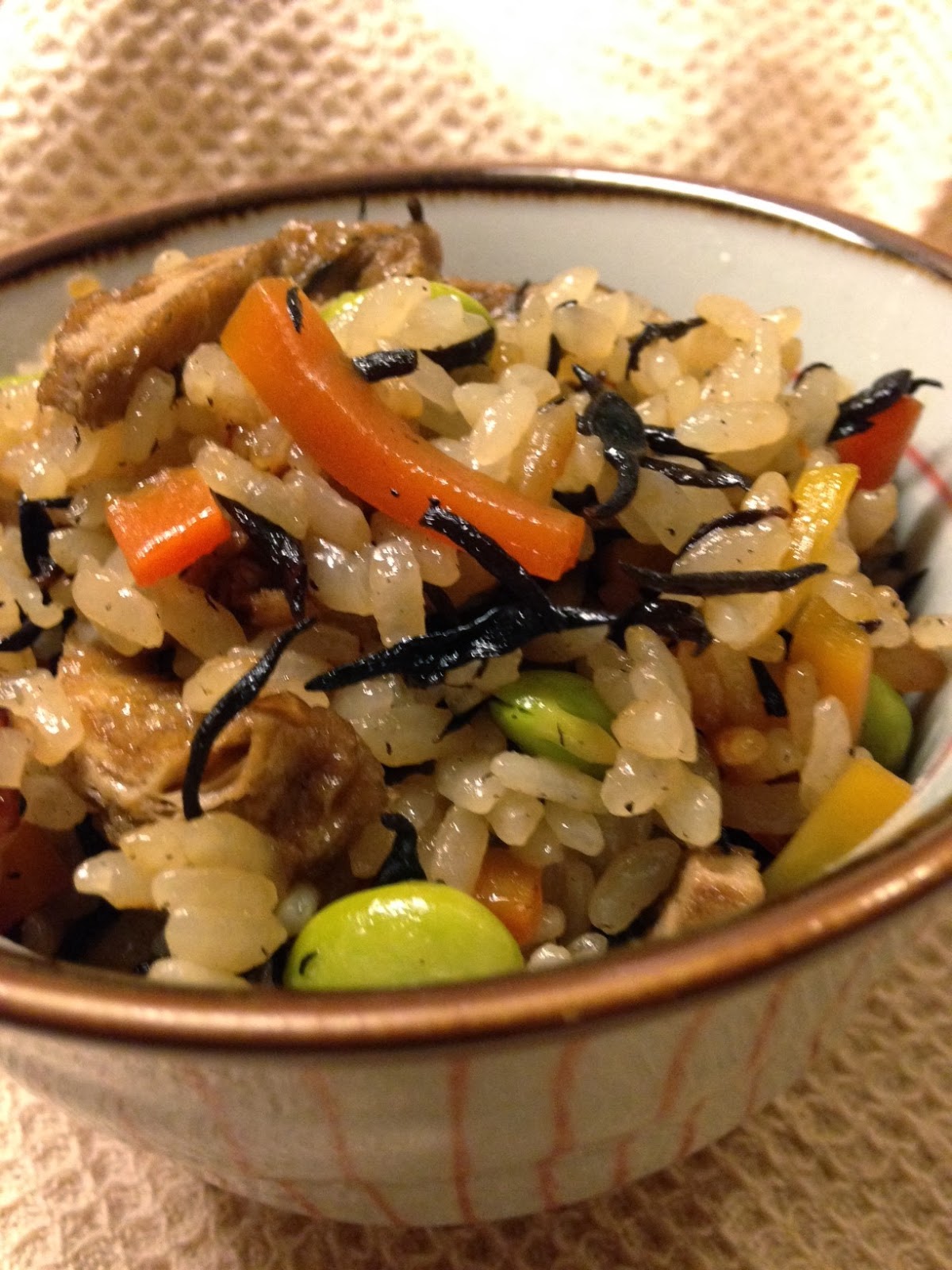Takenoko gohan - Bamboo shoot rice
Ingredients
2 ½ cups Japanese rice (sushi rice)
2 ¾ cups water
1 small takenoko, pre-cooked
1 dried chilli pepper
½ small carrot
1 pouch aburaage
2 tbsp. concentrated liquid dashi
2 tbsp. sake
2 tbsp. soy sauce
Sansho pepper to season, fresh or powdered
Kinome to garnish
Simmering sauce
½ cup water
1 tbsp. concentrated liquid dashi
2 tbsp. sugar
2 tbsp. sake
2 tbsp. soy sauce
Serves: 4
Time: 80 minutes
Directions
1. Wash the rice thoroughly until water runs clear, reserving the opaque water from the first wash to boil the takenoko. Let the rice sit in a large pot with the 2 ¾ cups of water. (They say you should let rice sit for at least 30 minutes before cooking. I confess I almost never do this.) If you are using a rice cooker to make the dish, place the rice and water in the cooker, but do not turn it on yet.
2. Rinse the pre-cooked takenoko and boil it in the water reserved from washing the rice. (This helps to bring out the flavour in the cooked bamboo shoots.) Add the chilli pepper to the pot and let it cook for about 15 minutes. If you manage to get fresh takenoko, wash off the dirt and peel off the first few layers before boiling it; additional layers will peel off more easily after the boiling process. Fresh takenoko will take about 30-50 minutes, depending on the size. Once cooked, rinse and let cool.
3. While the takenoko is boiling, begin cooking the rice in the pot at medium to high heat. (Again, if using a rice cooker, do not turn it on yet.)
4. Cut the takenoko into bite-sized pieces, and the carrots into thin slivers. Rinse the aburaage in boiling water to remove the excess oil, and slice into thin strips.


5. Put the vegetables in a small pot and add the ingredients for the simmering sauce. Let cook until all the liquid has been absorbed.
6. Once the rice starts to boil, give it a stir and add the simmered vegetables and the remaining liquid ingredients to the pot. For rice cookers, add the same ingredients and turn on the cooker. Cover and cook to doneness, about 30 minutes.


7. Stir the rice to distribute the ingredients evenly and top with whole sansho pods or kinome leaves. A sprinkling of dry powdered sansho pepper will work if you can’t find the fresh stuff.
How I made out…
How I made out…
The recipe that I was working from used aburaage, which my mother-in-law said was “strange.” She says it should be made with carrot. (I’m not sure if this “strangeness” is true throughout Japan or just in her kitchen.) I made the executive decision to use both aburaage and carrot along with the bamboo shoots, and I think the flavours worked really well together. I also tried a variation with mushrooms instead of carrot, you know, for the full woodland experience. Also, yum.
The verdict…
The first time I made takenoko gohan, the seasoning was a bit weak. A few days later, So and I stayed at a ryokan (a Japanese inn) and had a really wonderful takenoko gohan there. They’d obviously used more dashi and soy sauce than I had. I made the adjustment the next time around and the results were delicious. You’ll know the balance is right if the rice turns a tan or beige color.







The aburaage look like an interesting ingredient. As I am not an expert with Japanese products, I wouldn't know if the recipe sounded strange using it. It looks delicious the way you have made it though!
ReplyDeleteMore food, please :)
ReplyDelete